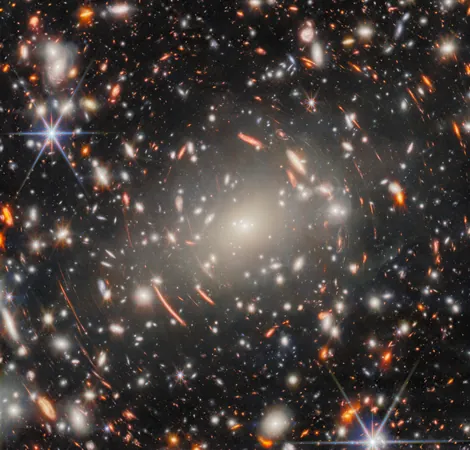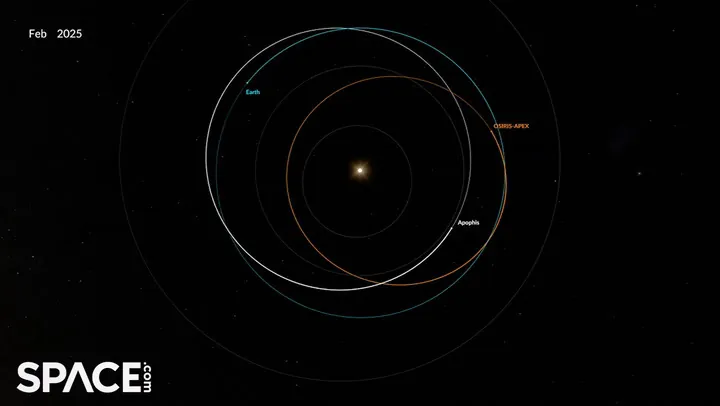
Breathtaking Revelations from JWST's Gaze into Abell S1063
2025-06-02
Author: Arjun
A Historic Deep Field Image Unveiled
The James Webb Space Telescope (JWST) has delivered an extraordinary deep field image of the galaxy cluster Abell S1063, outperforming Hubble's earlier captures in both clarity and detail. Located a staggering 4.5 billion light-years away in the constellation Grus the Crane, Abell S1063 isn't just any ordinary galaxy cluster; it acts as a cosmic lens, bending and focusing light from even more distant galaxies, unveiling some of the universe's oldest celestial wonders.
Unlocking the Secrets of the Early Universe
Hubble's 2016 image of Abell S1063 first hinted at the presence of gravitational lensing, showcasing warped arcs of light from distant galaxies that would remain hidden without such technology. Now, thanks to JWST's Near-Infrared Camera (NIRCam), these ancient galaxies are presented in stunning detail, revealing an unprecedented number of distant objects from the early universe along with other mysterious features that astronomers had yet to see.
The Science Behind the Stunning Image
Capturing this remarkable image required immense effort. Unlike standard astronomical images, which already demand lengthy exposures, deep field photography involves even more prolonged collection of light to uncover faint objects scattered across the cosmos. JWST's image of Abell S1063 was meticulously compiled from nine snapshots taken at various infrared wavelengths, amounting to an astonishing total of around 120 hours of observing time—making it JWST's deepest observation of a single target to date.
The Quest to Understand Our Cosmic Origins
By studying these primordial galaxies, astronomers are equipped with unique insights into the formation of the universe's first structures. This cosmic lens, Abell S1063, allows scientists to delve deeper into the origins, evolution, and eventual formation of galaxies like our very own Milky Way.
Eager for More?
If you're captivated by the cosmos, delve into more awe-inspiring JWST deep-field images and draw fascinating comparisons with Hubble's findings, as we continue to explore the mystique of our universe.




 Brasil (PT)
Brasil (PT)
 Canada (EN)
Canada (EN)
 Chile (ES)
Chile (ES)
 Česko (CS)
Česko (CS)
 대한민국 (KO)
대한민국 (KO)
 España (ES)
España (ES)
 France (FR)
France (FR)
 Hong Kong (EN)
Hong Kong (EN)
 Italia (IT)
Italia (IT)
 日本 (JA)
日本 (JA)
 Magyarország (HU)
Magyarország (HU)
 Norge (NO)
Norge (NO)
 Polska (PL)
Polska (PL)
 Schweiz (DE)
Schweiz (DE)
 Singapore (EN)
Singapore (EN)
 Sverige (SV)
Sverige (SV)
 Suomi (FI)
Suomi (FI)
 Türkiye (TR)
Türkiye (TR)
 الإمارات العربية المتحدة (AR)
الإمارات العربية المتحدة (AR)